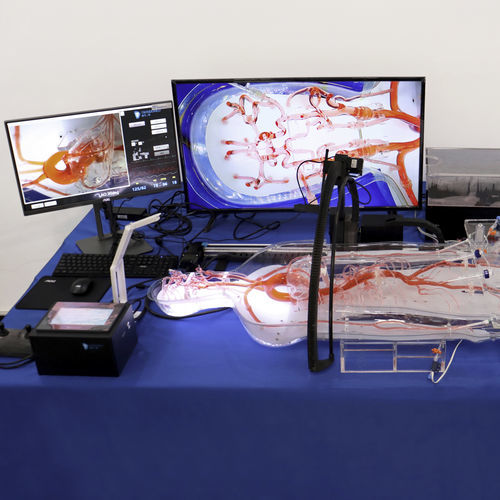
#Industry News
Medical Simulators for Interventional Procedures
EVT
Endovascular intervention is a medical procedure that involves the use of minimally invasive techniques to treat cardiovascular diseases. This method of treatment has become increasingly popular in recent years because it allows patients to recover more quickly and reduces the risk of complications compared to traditional open surgery.
During an endovascular intervention, a thin catheter is inserted through a small incision in the skin, usually in the groin area, and carefully guided through the blood vessels to the site of the blockage or damaged area. The catheter contains specialized instruments that can perform a variety of tasks, such as delivering medication, removing clots or plaque buildup, or inserting stents to keep the vessels open.
One of the most common uses of endovascular intervention is to treat coronary artery disease, which occurs when the blood vessels that supply the heart muscle become narrowed or blocked. This condition can cause chest pain, shortness of breath, and even heart attacks. Using endovascular techniques, doctors can open up these blocked vessels and restore blood flow to the heart without having to perform open-heart surgery.
Endovascular intervention can also be used to treat other cardiovascular conditions, including peripheral artery disease, which affects the blood vessels outside the heart, and aortic aneurysms, which are bulges in the walls of the body's largest artery. In each case, the minimally invasive approach allows for faster recovery times and fewer complications than traditional surgery.
While endovascular intervention is generally considered safe, there are still some risks involved. In rare cases, the catheter can damage the blood vessel or dislodge a piece of plaque, causing a blockage downstream. Patients may also experience bleeding or infection at the site of the incision. However, these risks are typically much lower than those associated with traditional open surgery.
Overall, endovascular intervention is a valuable tool in the treatment of cardiovascular disease. By using minimally invasive techniques to target specific problem areas, doctors can effectively treat many conditions while minimizing the risks and discomfort associated with traditional surgery. As technology continues to advance, it is likely that endovascular intervention will become an even more common and effective option for patients in need of cardiovascular care.
Endovascular Intervention Trainer(endovascular simulator) is suitable for endovascular intervention operation.





